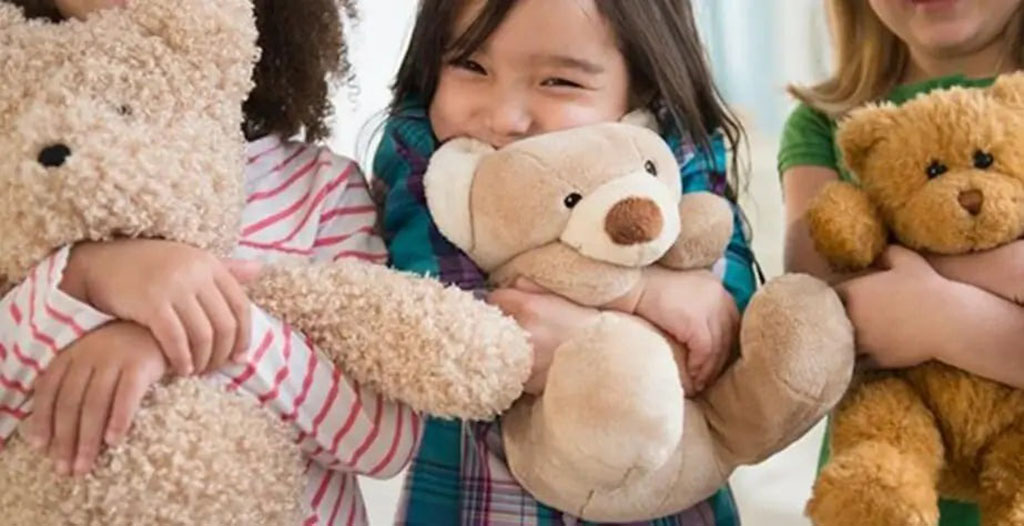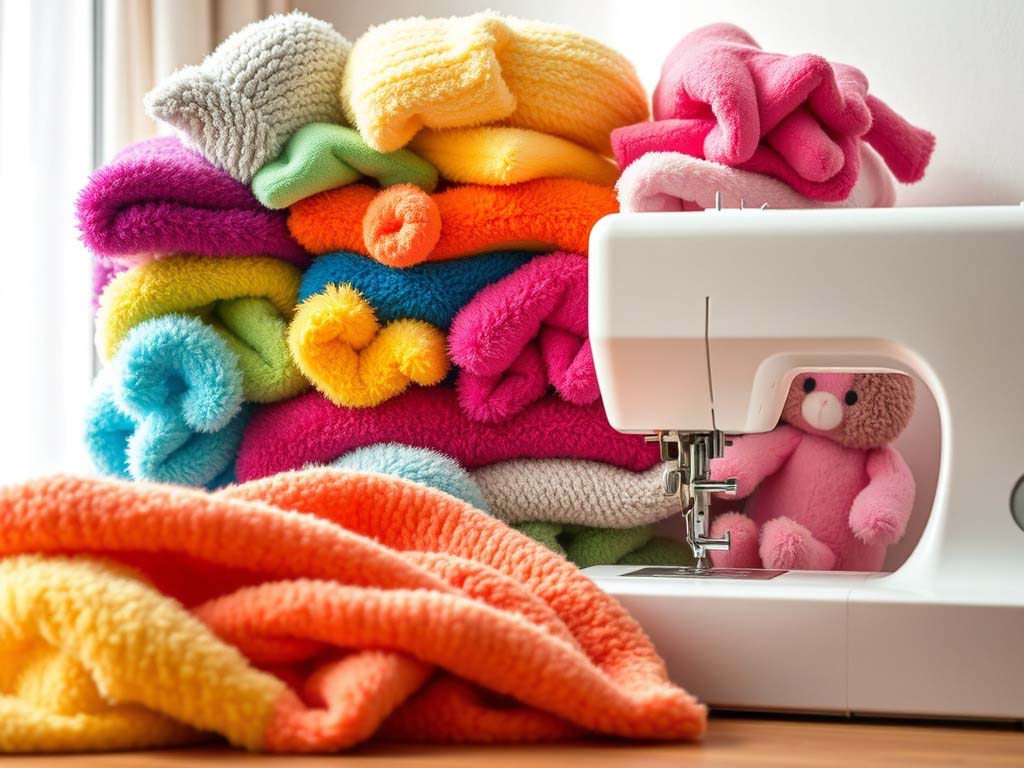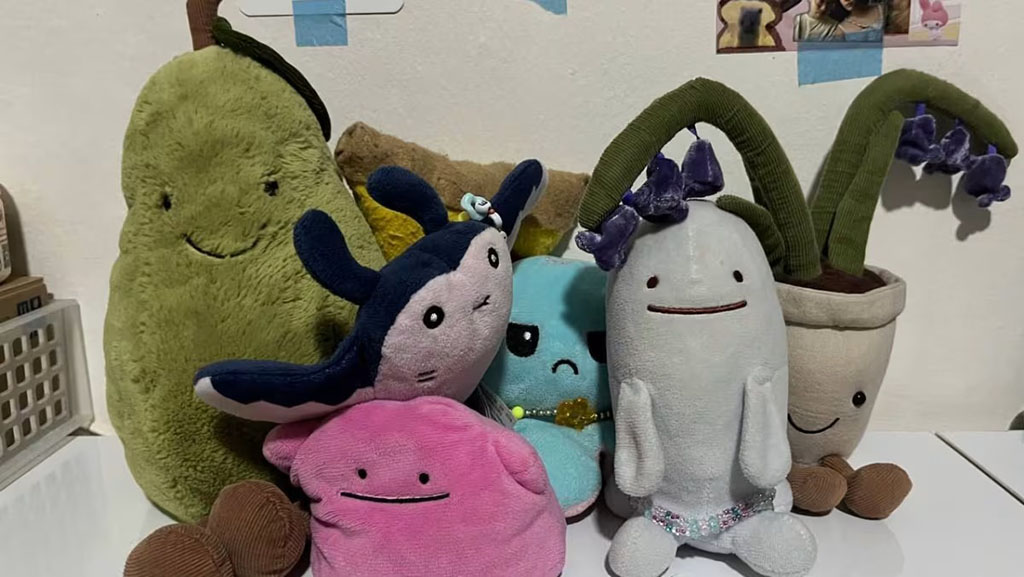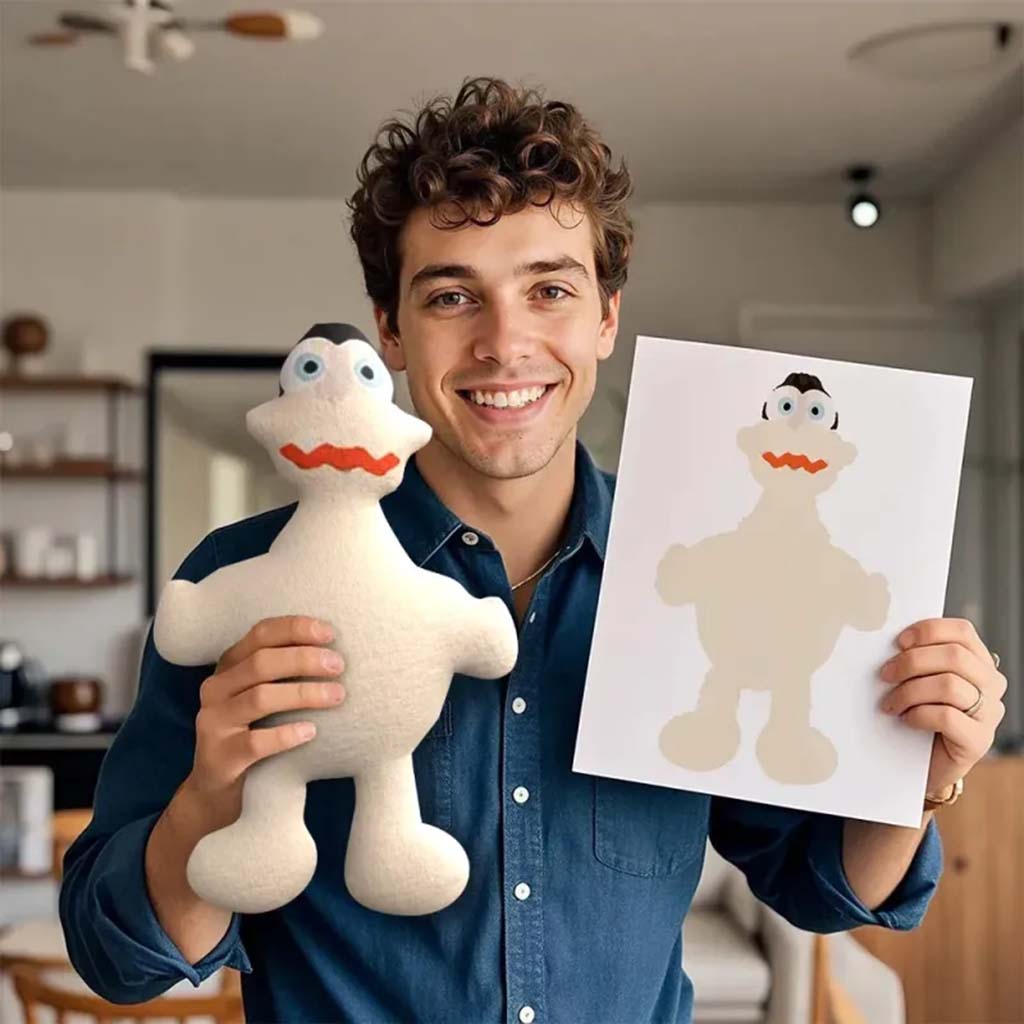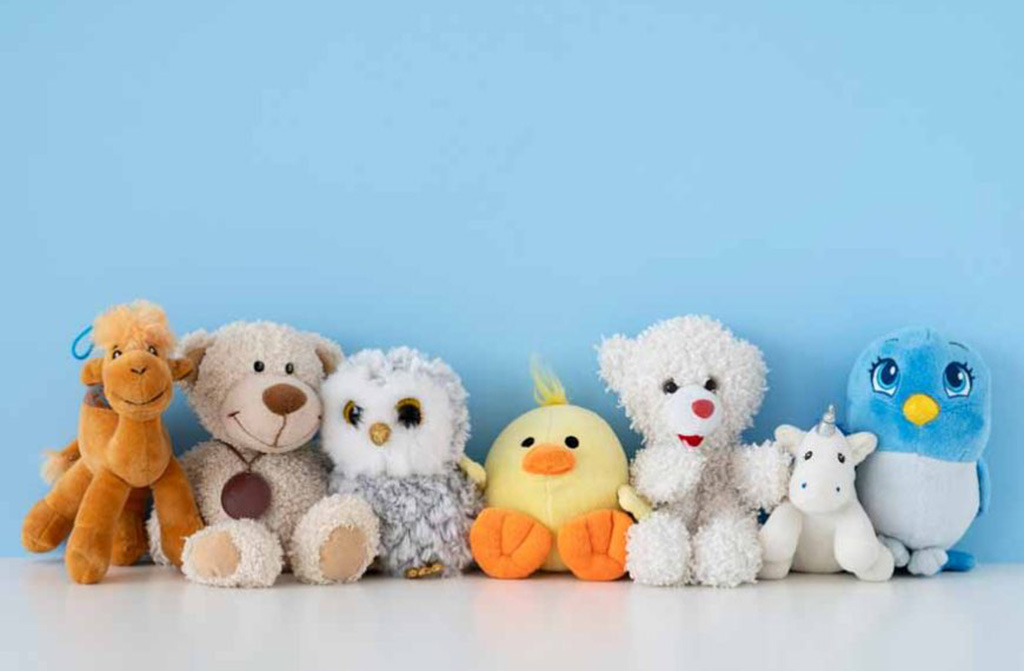By Amanda — Kinwin (OEM/ODM plush manufacturer; CE/ASTM/CPSIA ready)
The right fabric makes a teddy bear lovable on day one—and still beautiful after years of hugs. In this guide, I’ll help you choose materials with the perfect balance of softness, realism, durability, compliance, and cost. We’ll compare mohair and faux fur with mainstream options like minky, velboa, and fleece; then translate specs (pile length, density, denier, backing, finishes) into practical sourcing decisions that pass EN71/CPSIA and scale in production.
Which fabric families are best for teddy bears (mohair, faux fur, minky, velboa, fleece)?

Each fabric family serves a different audience—from heirloom collectibles to baby-safe retail bears.
Table 1 — Teddy-Bear Fabric Families at a Glance
| Fabric | Composition | Handfeel & Look | Typical Use | Pros | Watch-outs |
|---|---|---|---|---|---|
| Mohair | Angora goat hair on cotton backing | Natural luster, vintage “alive” pile | Collector/artist bears | Premium, ages beautifully | High cost, longer lead times, careful care |
| Faux Fur | PET or PET/modacrylic blends on knit backing | Realistic, fluffy, directional nap | Premium retail, realistic bears | Rich volume, animal realism | Cutting with nap; shedding control |
| Minky (Microplush) | Fine-denier polyester knit pile | Silky, buttery, modern | Baby/comfort bears | Ultra soft, embroidery-friendly | Slight sheen, shows oil if not pre-washed |
| Velboa | Dense short-pile polyester | Smooth, crisp prints, tidy silhouette | Core retail bears | Cost-effective, clean look | Less “hairy” realism |
| Fleece / Teddy Sherpa | Brushed/poly or loop pile | Cozy, matte | Winter themes, trims | Warm look, forgiving | Lower print sharpness |
How I position them:
- Heirloom / collector bears: Mohair or premium faux fur.
- Premium realistic retail: Medium/long-pile faux fur with short-pile muzzle.
- Baby/comfort: Minky (2–3 mm pile) with embroidered features.
- Volume/value retail: Velboa for body + minky muzzle/paws; or fleece for seasonal bears.
How do pile length, density, and fiber denier affect handfeel, realism, and wear?

Pile length shapes visual character; density and denier control handfeel and durability.
- Pile length
- Short (1–3 mm): crisp, modern, safe for embroidery (minky, velboa).
- Medium (4–10 mm): fuller, cuddly surface—great for retail teddies.
- Long (10–25+ mm): premium fluff/realism; needs grooming.
- Pile density (stitches per inch & GSM)
Higher density = richer cover, improved abrasion resistance, less “balding.” - Fiber denier
Lower denier (0.9–1.5d) feels silky; higher denier (>3d) feels sturdier. Mohair fiber diameter is natural—luster is key to its premium look.
Table 2 — Spec Settings and Their Effects
| Spec | Softer / More Realistic Setting | What You Gain | What to Manage |
|---|---|---|---|
| Pile Length | 6–12 mm for retail realism | Cuddly look, volume | Grooming and seam bulk |
| Density & GSM | 280–380 gsm for bodies | Coverage, durability | Slower sewing, higher cost |
| Fiber Denier | ≤1.5d (minky face) | Silky touch, baby-safe feel | Risk of pilling if backing weak |
| Mixed Pile Strategy | Long pile body + short muzzle | Expressive face, neat nose | Color/pile junction alignment |
Tip: Many of our most successful bears use longer pile on the body for warmth and short pile on the muzzle/paw for facial precision.
What backing constructions and stretch properties improve pattern yield and seam strength?

The hidden knit backing drives cutting yield and seam performance.
- Warp-knit (tricot) backing: Low vertical stretch; ideal for face panels and precise symmetry.
- Weft-knit backing: More stretch and drape; forgiving for round bodies, but watch embroidery distortion.
- Spandex-blend backings: High recovery for apparel-like trims (hoodies/scarves) rather than main bear panels.
- Cotton twill backing (mohair): Stable substrate that sews like a woven; strong seam hold.
Table 3 — Backing & Patterning Guide
| Backing Type | Stretch | Best Placement | Patterning Note | Seam Strength Tips |
|---|---|---|---|---|
| Warp-knit tricot (poly) | Low–moderate | Face/muzzle, precise parts | Minimal distortion | Lockstitch + bar-tack at stress points |
| Weft-knit (poly) | Moderate–high | Torso, limbs | Add easing on tight curves | Overlock + topstitch to stabilize |
| Cotton backing (mohair) | Minimal | Entire shell (collector) | Excellent registration | Slightly longer stitch length |
| Laminate/nonwoven print base | Minimal | Print panels/markings | Sharp registration | Shorter stitches to avoid perforation |
Cutting yield: With directional naps (faux fur, mohair), align all pieces along the nap; expect higher yield loss vs short-pile.
Which finishing processes (raising, shearing, heat-setting, softeners) optimize softness and shedding control?

Finishing makes or breaks the final handfeel.
- Raising/Napping: Lifts pile for softness and volume.
- Shearing: Levels pile to one height for neat faces and consistent color read.
- Brushing/Polishing: Aligns nap; improves glide and sheen.
- Heat-setting: Locks pile lay; reduces transit crush and fiber flyaways.
- Silicone micro-emulsion softeners: Lower friction → buttery touch; choose wash-durable grades.
Table 4 — Finish Stack for Teddy Bears
| Step | Why It Matters | Apply To | Control Points |
|---|---|---|---|
| Raising + Shearing | Soft + even tips | Minky/velboa faces | Avoid over-shearing |
| Brushing | Nap alignment, sheen | Faux fur bodies | Brush with nap pre-assembly |
| Heat-setting | Shape memory, anti-crush | All pile fabrics | Temp/time per fiber |
| Silicone Softeners | Smoother hand, anti-matting | Baby/comfort bears | Use non-oily grades, test wash |
Shedding control: For faux fur, specify fiber length tolerance, shear height tolerance, and lint targets; vacuum and brush parts before finishing.
How are durability and colorfastness validated (Martindale, pilling, seam slippage, wash tests)?

We validate softness and longevity with lab tests plus abuse checks.
- Martindale Abrasion: High-wear zones (nose, paws) resist tip break.
- Pilling (Random Tumble/ICI): Maintain a smooth surface.
- Colorfastness to washing/rubbing/saliva–sweat: Essential for baby bears and light apparel pairings.
- Seam slippage / seam strength: Backing holds stitches under load; no fiber pull-out.
- Wash/Recovery: Fabric—and the sewn bear—keeps shape and handfeel after cycles.
Table 5 — Typical Retail Targets (Calibrate to Your Brand)
| Test | Target (Common) | Notes |
|---|---|---|
| Pilling Grade | ≥ 4 after specified cycles | Minky/velboa should excel |
| Colorfastness (wash/rub) | ≥ 4–5 | Prevent bleed on light accents |
| Saliva/Sweat Fastness | ≥ 4 | Baby-safe expectations |
| Martindale Abrasion | Meet zone spec | Define nose/paws as critical |
| Seam Slippage/Strength | Within ISO/ASTM limits | Reinforce limb joins |
| Wash Recovery | Shape/hand retained | Test with stuffing inside |
What safety and chemical standards (EN71-3, CPSIA, REACH) and sourcing factors (MOQ, lead time, rPET/GRS) guide fabric selection?

Compliance first. Choose fabrics that pass toy safety:
- EU: EN 71-1/2/3 (mechanical/flammability/chemical migration) + REACH (SVHC/azo dyes).
- US: ASTM F963 (mechanical/physical) + CPSIA (lead ≤100 ppm, phthalates).
- UK: UKCA mirrors EN 71.
- Retail RSL/OEKO-TEX®: Often required by big-box chains.
Sourcing realities:
- MOQs & lead times
- Stock minky/velboa colors: lower MOQ, 2–3 weeks.
- Custom dye/print: higher MOQ, 4–6+ weeks.
- Faux fur (long pile) or mohair: higher MOQ, 6–8+ weeks.
- Sustainability
- rPET minky/velboa + GRS documentation available; cost +8–20% and sometimes higher MOQ.
- Pair with rPET fiberfill and mono-material packaging for a credible eco claim.
Table 6 — Compliance & Sourcing Checklist
| Item | What to Ask | Why |
|---|---|---|
| EN 71-3 / CPSIA reports | Current 3rd-party tests by color/lot | Clear customs, avoid relabel |
| REACH / RSL declarations | SVHC/azo controls | Retail acceptance |
| MOQ & Lead Time | Stock vs custom colors | Sampling calendar, cash plan |
| rPET/GRS docs | Chain-of-custody | Support marketing claims |
| Finish Specs | Shear height, silicone grade | Consistent handfeel |
| Nap Direction | Mark on pattern | Avoid patchy color read |
Practical teddy-bear fabric stacks (ready to brief)
1) Baby/Comfort Teddy (Retail Hero)
- Fabric: Minky, 2.5–3 mm, 280–320 gsm, warp-knit backing
- Face: Embroidery only (no hard parts)
- Finish: Raise–shear–brush, silicone softener, heat-set
- Tests: EN 71-1/2/3, ASTM F963, CPSIA; saliva/sweat colorfastness
- Stuffing: Siliconized 3D HCF fiberfill (soft rebound)
2) Realistic Premium Teddy
- Fabric: Faux fur body 10–16 mm, short-pile muzzle (velboa/minky)
- Finish: Brushed with nap, heat-set; lint control
- Pattern: Nap-consistent layout; reinforced limb joins
- Tests: As above + abrasion focus on nose/paws
3) Collector/Heirloom Teddy (Mohair)
- Fabric: Mohair on cotton backing (select pile length & density)
- Face: Hand-stitched nose (waxed thread), glass/plastic eyes as age-graded (or embroidered for safety)
- Care: Position as collectible; surface clean
- Lead: Longer; plan seasonal releases
4) Eco Teddy
- Fabric: rPET minky/velboa (GRS), neutral palette from pre-approved shades
- Stuffing: GRS rPET 3D HCF
- Packaging: Mono-material kraft box + paper belly band
- Docs: GRS chain-of-custody + standard toy tests
Cost planning (quick pointers)
- Short-pile minky/velboa generally yield the best cost-to-softness ratio for mainstream bears.
- Faux fur raises fabric and labor cost (nap alignment, shedding control).
- Mohair is premium—price for limited runs and collector channels.
- Use short-pile muzzle + long-pile body to keep realism and embroidery precision without over-spending.
Conclusion
Choosing fabric for teddy bears is about matching audience + feel + realism + compliance + cost.
- Minky/velboa: modern softness and reliability for retail.
- Faux fur: premium realism when nap is managed.
- Mohair: heirloom look for collectors.
Lock specs for pile, density, backing, finishes, then validate with pilling/abrasion/colorfastness/seam tests. Add rPET/GRS when sustainability matters, and plan MOQs/lead times early.
At Kinwin, I translate mood boards into tested fabric specs and production-ready bears that pass EN71/CPSIA on the first run. If you want swatch curation or a costed bill of materials for your next teddy, I’m ready.
Contact me at [email protected] or visit kinwintoys.com to start your teddy bear line.


